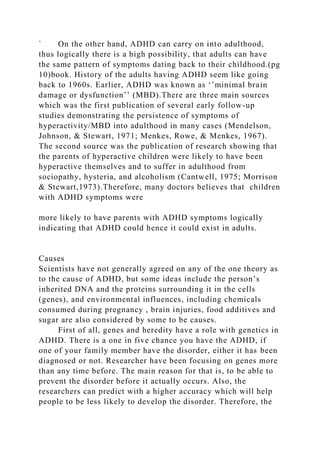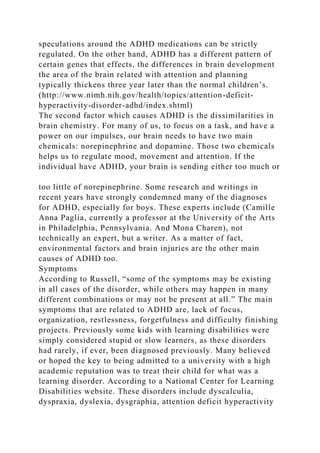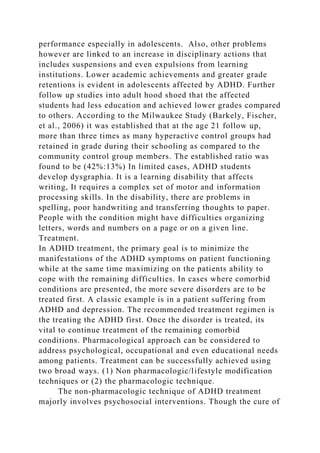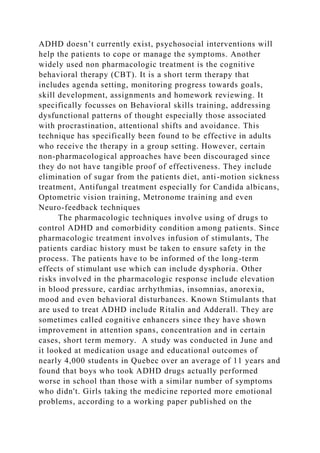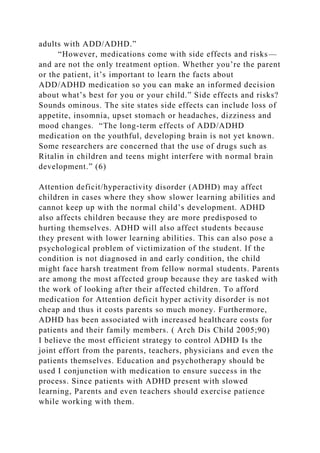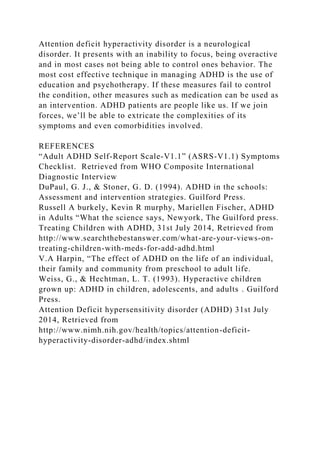Attention Deficit Hyperactivity Disorder (ADHD) is a neurobehavioral disorder primarily diagnosed in children but can persist into adulthood. The disorder is characterized by symptoms of inattention, hyperactivity, and impulsivity, often requiring a combination of medication and psychotherapy for effective treatment. Treatment methods range from pharmacological approaches, such as stimulant medications, to non-pharmacological interventions like cognitive behavioral therapy, with varying efficacy and side effects reported among patients.


